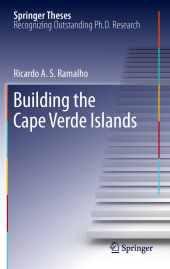 Neuerscheinungen 2013Stand: 2020-01-07 |
Schnellsuche
ISBN/Stichwort/Autor
|
Herderstraße 10
10625 Berlin
Tel.: 030 315 714 16
Fax 030 315 714 14
info@buchspektrum.de |

Ricardo A. S. Ramalho
Building the Cape Verde Islands
2013. xviii, 210 S. 44 SW-Abb., 23 Farbabb. 235 mm
Verlag/Jahr: SPRINGER, BERLIN 2013
ISBN: 3-642-26807-2 (3642268072)
Neue ISBN: 978-3-642-26807-6 (9783642268076)
Preis und Lieferzeit: Bitte klicken
This volume offers a geological summary and detailed mapping of paleo sea level markers on Cape Verde. It documents uplift of the islands relative to sea level and uses the uplift features to test various models of hotspot development.
Hotspots are enigmatic surface features that are not easily explained in the framework of plate tectonics. Investigating their origin is the goal of this thesis, using field evidence collected in the Cape Verde Islands, a prominent hotspot archipelago in the eastern Atlantic Ocean. The approach taken is to document uplift of the islands relative to sea level and use the uplift features to test various models of hotspot development. Island uplift is thought to arise from the growth of the anomalously shallow seafloor on which the islands rest, known as the bathymetric swell, which is characteristic of hotspots.
The work comprises a geological summary and detailed mapping of paleo sea level markers on Cape Verde. Isotopic dating of the markers shows that uplift on the islands over the last 6 Myr is up to 400 m, and that the uplift chronology varies among islands. Two processes act to raise the Cape Verde Islands. The dominant process is one that is local to individual islands. The regional, swell-related component is smaller, and possibly episodic. The observations provide strong constraints on swell development and on hotspot models.
Preface.- Introduction.- The Cape Verde Archipelago.- Constraining the Cape Verde Swell using numerical models.- How to trace island freeboard.- Tracers of uplift and subsidence in the Cape Verde Archipelago.- Dating of sea-level palaeo-markers.- Vertical movements of Ocean Island Volcanoes: insights from a stationary plate.- Conclusions.- Future Work.- Bibliography.


